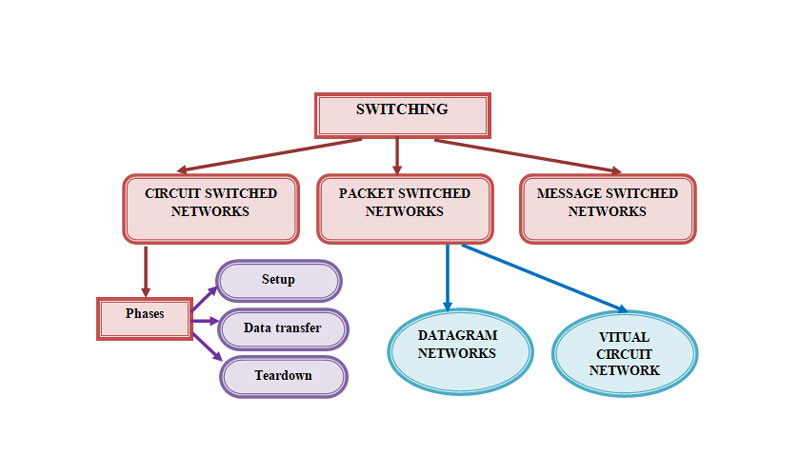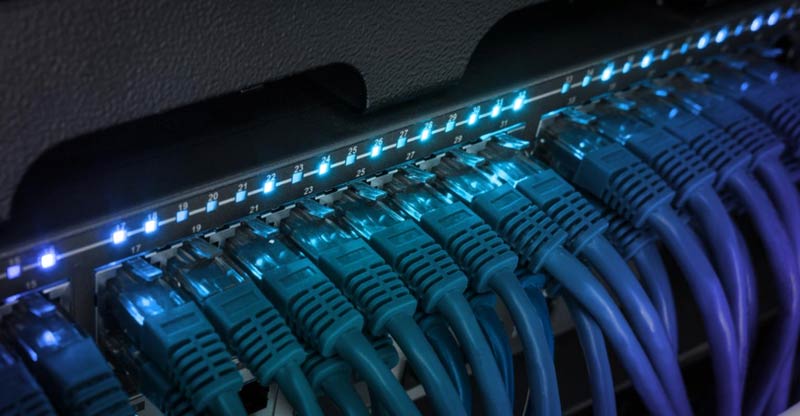Switching is the process to forward packets coming in from one port to a port leading towards the destination but when data comes on a port it is called ingress, and when data leaves a port or goes out it is called egress. A communication system may include a number of switches and nodes. The solution of connecting multiple devices for a one to one communication is switching defined as a network consists of series of interlinked nodes; called switches which in fact are capable of creating a temporary connection between two or more devices connected to a switch; hence nodes connected to the end system or routing. There are three types of switching networks; namely circuit-switched networks and message-switched network.
Also Read: Does wifi Change the World
Hierarchy of Network Switching:

Circuit Switching Networks:
Firstly, it consists of switches connected to the physical link in one connection between two stations is a dedicated path of one or more links whereas one connection uses one channel on each link. Secondly, the process’s resource reservations are stored in FDM and TDM slots before execution, and data transmission between two stations is not packetized. Finally, since the switches use band and time slots, there is no addressing. It is a three-phase process incomplete. Furthermore, conventional telecommunications networks use this technique.
PHASES:
Data transfer:
With a stable connection, both systems can transfer data.
Teardown:
When one device has to reconnect; a signal is transmitted to the switch allowing the energy to be released.
Packet Switching Networks:
Packet switching is a way of sorting data that is sent over a wireless network into packets. Secondly, comes a header and a payload make up a packet. Indeed, networking hardware uses the header data to route the packet to its destination; therefore the payload is retrieved and used by device software. Moreover, in a network, packet switching is the most common method of data transmission in computer networks worldwide. Packet switching in fact enables the transfer of variable bit rate data streams and even represented as sequences of packets, over a computer network that uses statistical multiplexing or hierarchical bandwidth allocation techniques to distribute transmission resources as desired.
Message Switched Networks:
Before routing, message switching stores each message in its entirety at intermediate nodes. Messages have an end-to-end delay that is depending on the message duration and the number of intermediate nodes. Each additional intermediate node adds a delay that is at least equal to the node’s minimum propagation delay into or out of it; hence it’s truly worth noting that nodes can have various transmissions. Moreover, owing to the various technologies used on the links, there are propagation times on both incoming and outgoing communications. In conclusion, the transmitting delays are above any propagation delays that might occur in the message route.
Comparison Between Packet and Circuit Switched:
| Items | Circuit | Packet |
|---|---|---|
| Efficiency | Not efficient | Efficient |
| Connection | connection-oriented | connectionless |
| Delay | minimal delay | More delay |
| Resources reservation | Resources are reserved | The resource is not reserved |
| path | physical path | no physical path |
| bandwidth | bandwidth wastage | no wastage |







